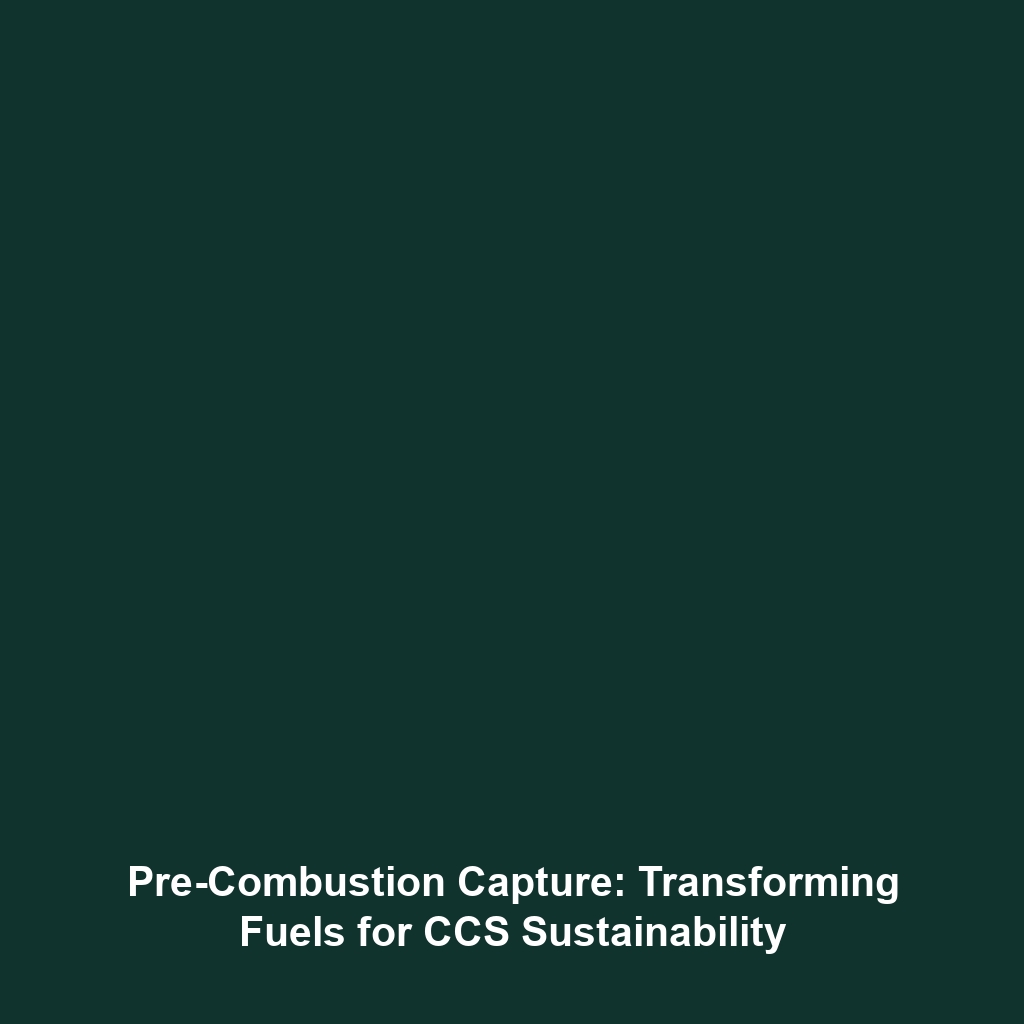Why is CCS Important?: The Role of CCS in Combating Climate Change
Introduction
Carbon Capture and Storage (CCS) is increasingly recognized as a critical strategy in the global battle against climate change. As the world grapples with rising CO2 emissions, CCS offers a viable solution to reduce greenhouse gases and mitigate their impact on the environment. By capturing carbon dioxide from sources such as power plants and industrial processes, CCS not only prevents emissions from entering the atmosphere but also paves the way for a more sustainable energy future. Understanding why CCS is important can influence policy and drive innovation in clean energy technologies.
Key Concepts
At its core, Carbon Capture & Storage (CCS) involves three major steps: capturing carbon dioxide emissions at their source, transporting the captured CO2, and securely storing it underground in geological formations. This process is vital for enabling a transition to low-carbon energy systems while allowing for the continued use of fossil fuels in a cleaner manner. Key concepts associated with CCS include:
- Carbon Capture: Techniques such as pre-combustion capture and post-combustion capture aim to separate CO2 from other gases before they are released into the atmosphere.
- Storage Solutions: Long-term storage methods include using depleted oil and gas fields, deep saline aquifers, and other geological formations.
- Utilization: Some innovations focus on converting captured CO2 into useful products, such as fuels or building materials.
Applications and Real-World Uses
The applications of Carbon Capture & Storage (CCS) are diverse and pivotal in reducing the carbon footprint of various sectors. Specific examples include:
- Power Generation: Large power plants are implementing CCS technologies to reduce emissions while producing electricity.
- Industries: Heavy industries such as cement and steel manufacturing are adopting CCS to curb emissions from their operations.
- Oil Recovery: Enhanced oil recovery (EOR) techniques utilize captured CO2 to extract additional oil from existing fields, demonstrating a profitable use of CCS.
Current Challenges
Despite its potential, the deployment of Carbon Capture & Storage (CCS) faces several challenges, including:
- High Costs: The initial investment and operational costs associated with CCS technologies can be prohibitive for many companies.
- Public Perception: Misunderstandings and skepticism regarding the safety and efficacy of CCS can hinder progress.
- Infrastructure Needs: Significant investments in infrastructure are necessary for widespread implementation of CCS technologies.
Future Research and Innovations
Research into Carbon Capture & Storage (CCS) is ongoing, focusing on improving efficiency, lowering costs, and discovering new materials that enhance carbon capture capabilities. Some promising innovations include:
- Advanced Materials: Development of novel sorbents and membranes that improve the capture process.
- Direct Air Capture: Techniques that extract CO2 directly from the atmosphere are gaining traction as a supplement to traditional CCS methods.
- AI and Automation: Leveraging artificial intelligence to optimize CCS operations and monitor storage sites for safety and integrity.
Conclusion
In conclusion, Carbon Capture & Storage (CCS) represents a vital component of global efforts to mitigate climate change. By capturing greenhouse gas emissions and facilitating their safe disposal, CCS can contribute significantly to reducing atmospheric CO2 levels. As research progresses and more applications are developed, the importance of CCS will only increase in our quest for a sustainable future. To learn more about sustainable technologies, explore topics such as renewable energy and energy efficiency in our archive.








